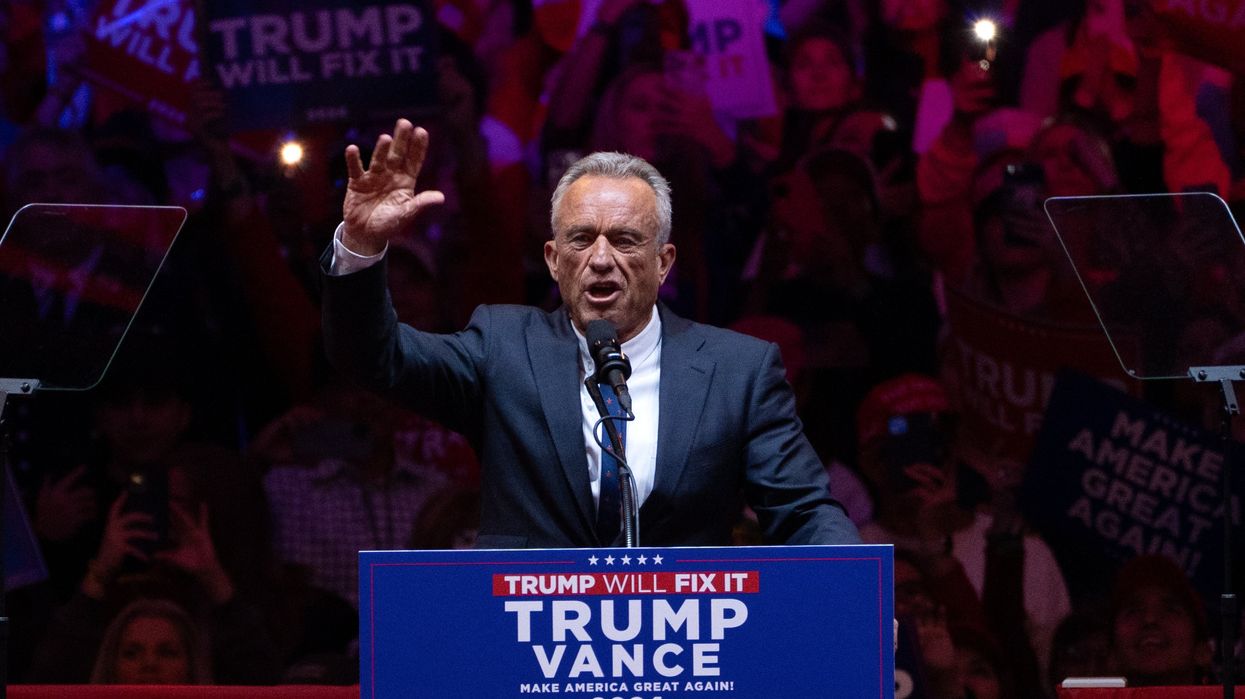The river was swift and unrelenting, its currents carrying victim after victim downstream. Local villagers responded by stringing nets across the water to prevent further drownings. Yet, despite their efforts, the death toll continued to rise.
Eventually, a newcomer to the village asked a simple yet critical question: “Why are people falling into the river in the first place?” Following the water upstream, the villagers discovered the source of the problem: a crumbling bridge sending person after person into the rapids.
This “ upstream parable ” illustrates the folly of America’s response to obesity.
Like the villagers, Americans have relied on reactive, downstream solutions to combat the problem. Most recently, political and public health officials have touted weight loss drugs like Ozempic and Wegovy as the solution. While these medications help people lose significant weight, they don’t address the reason people become obese in the first place.
Enter Robert F. Kennedy Jr., the controversial nominee for secretary of health and human services. While his nomination raises serious questions, it also offers a rare opportunity to confront the drivers of the obesity epidemic.
Obesity: Why the root of the problem matters
Obesity rates in the U.S. have surged over the past 30 years. According to The Lancet, the percentage of adults classified as overweight or obese has more than doubled to nearly half the population. Among adolescents, obesity rates tripled in the same period.
But the health consequences extend beyond weight gain. Obesity is a major driver of both diabetes and cardiovascular disease, and contributes to 50 percent of cancer deaths, according to the American Cancer Society.
While medical organizations acknowledge that many factors contribute to obesity, public health leaders increasingly describe it as a genetic and biological disease. But these factors could not possibly double obesity in just 30 years — human DNA evolves over millennia, not decades. This focus on biology — and on medical treatments like drugs and surgery — obscures the epidemic’s root cause.
The primary culprit is the food industry, which deliberately manufactures and markets ultra-processed, calorie-dense products packed with refined sugars and unhealthy fats.
Of course, genetics do play a role. The FTO gene, which increases susceptibility to overeating, helped early humans survive food shortages by encouraging calorie storage during times of abundance. In our modern era, the food industry has exploited this evolutionary holdover by engineering foods that trigger dopamine in the brain, driving addiction-like behaviors and overconsumption.
The result is a population increasingly dependent on nutrient-poor, high-calorie foods. Today, 42 percent of U.S. adults are obese, costing the health care system $173 billion annually.
While GLP-1 weight-loss drugs offer effective treatment for those already struggling with obesity, they require lifelong use to maintain results. More than eight in 10 patients discontinue these medications within two years, and the drug’s annual cost — exceeding $10,000 per person — places immense strain on patients and payors, and may soon hit Medicare’s budget, too.
Without changes to food manufacturing and marketing, the chronic disease crisis — which is responsible for 30 percent to 50 percent of preventable heart attacks, strokes, kidney failures and cancers — will only worsen.
Robert F. Kennedy Jr.: A controversial hope
Kennedy., awaiting Senate approval as President-elect Donald Trump’s pick for HHS secretary, is a polarizing figure. His promotion of debunked theories — like vaccines causing autism or Covid-19 targeting specific racial groups —raises serious concerns. Still, if confirmed, Kennedy could push for aggressive reforms that target the root causes of obesity, a step none of his predecessors have taken.
Kennedy has been outspoken in his criticism of the Food and Drug Administration, accusing the agency of suppressing access to products that “advance[s] human health but can’t be patented by” pharmaceutical companies. He has also voiced opposition to the widespread use of GLP-1 weight-loss drugs, describing them as a shortsighted approach to combating obesity.
Looking to the past for cures
Kennedy has promised to confront the food industry and revive America’s health, but the question remains: How might he achieve these ambitious goals? History offers a two-part blueprint: prohibition and taxation.
In the 1970s, research linked lead in gasoline to severe neurological damage in children. In response, the Environmental Protection Agency phased out leaded gasoline, reducing lead levels in children by over 90 percent. Similarly, eliminating lead in paint and pipes demonstrated how regulatory prohibitions can drive significant public health improvements.
More recently, local governments in cities like Berkeley, California, and Philadelphia implemented soda taxes to curb sugary beverage consumption, cutting sales by as much as 38 percent. Despite resistance and heavy lobbying from the beverage industry, these measures highlight how financial disincentives can effectively encourage healthier choices.
The sensible path forward
As long as high-calorie, processed foods dominate grocery stores, school cafeterias and restaurant menus, the nation’s health will remain in crisis.
Taxation offers a logical solution. If sugar- and fat-laden products contribute to hundreds of billions in health care costs, those expenses should be reflected in their prices. Revenue from these taxes, coupled with future savings from reduced obesity-related health care spending, could subsidize healthier food options for low-income families.
This dual approach — discouraging harmful choices while promoting affordable, nutritious alternatives — has the potential to reshape America’s food landscape and improve public health for generations to come.
If RFK Jr.’s nomination is confirmed and he chooses to target the food industry, he may garner bipartisan support. Democrats have long championed nutritional improvements for disadvantaged families, while Republicans seek reforms that reduce health care spending.
The time has come to move upstream — to repair the crumbling bridge of American health rather than relying on the safety nets of surgery and drugs. The next HHS secretary will face significant resistance from the food industry in pursuing this course, but courageous leadership can turn the tide of the obesity epidemic and deliver a stronger, healthier future for our nation.
Pearl, the author of “ ChatGPT, MD,” teaches at both the Stanford University School of Medicine and the Stanford Graduate School of Business. He is a former CEO of The Permanente Medical Group.




















